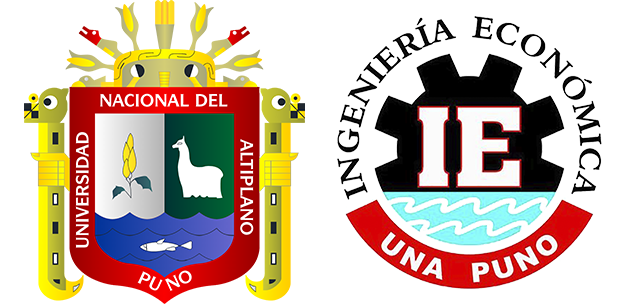El sistema urbano del Perú al inicio del siglo XXI, 2007-2017
DOI:
https://doi.org/10.26867/se.2021.v10i1.108Palabras clave:
sistema urbano, crecimiento ciudades, urbanización, pobreza urbanaResumen
El objetivo del estudio es explorar las características del proceso de urbanización y sus manifestaciones territoriales en Perú en el periodo 2007-2017. En esta fase de crecimiento económico la urbanización se aceleró dado que el grado y la tasa de urbanización aumentaron; en tanto que, la concentración urbana nacional se redujo ligeramente debido al menor dinamismo de las ciudades grandes respecto a las ciudades medianas y pequeñas; la urbanización fue eminentemente costera por la importancia demográfica de Lima-Callao; por su parte, en las regiones de la sierra y selva tuvieron mayor peso demográfico las ciudades medias. Así mismo, en este periodo se observa un mayor dinamismo de las ciudades de la sierra lo que condujo el debilitamiento de la concentración urbana. Territorialmente las localidades medianas se encuentran localizadas a mayor altitud, las ciudades grandes se ubican más cercanas a la capital de la república. Si bien los niveles de pobreza urbana se redujeron, pero en mayor magnitud se encuentran localizados en la selva y sierra; la pobreza urbana muestra una asociación inversa con el tamaño de ciudades; así mismo, se observa una asociación positiva entre la pobreza y la distancia, y la pobreza y la altitud de las localidades.
Métricas
Referencias
BALCHIN, P., D. ISAAC & J. CHEN (2000) Urban economics: A Global Perspective,. Nueva York: Palgrave.
BANCO MUNDIAL (2009) Una nueva geografía económica: Informe. Bogotá, Colombia. Recuperado de http://documentos.bancomundial.org/curated/es/785111468331213672/pdf/437380WDR20091101OFFICIAL0USE0ONLY1.pdf
BERRY, B. (1961) Cite zise distribution and economic development. Economic Development and Cultural Change, vol 9, pp. 573-587.
CAF (2017) Crecimiento urbano y acceso a oportunidades: un desafío para América Latina. Bogotá, Colombia. Recuperado de http://scioteca.caf.com/bitstream/handle/123456789/1090/RED%202017%20esp.pdf?sequence=13&isAllowed=y
CEPAL (2015) Panorama del desarrollo territorial en América Latina y el Caribe. Santiago de Chile. Recuperado de https://repositorio.cepal.org/bitstream/handle/11362/39223/1/S1500808_es.pdf
CEPAL (2009) Economía y territorio en América Latina y el Caribe: desigualdades y políticas. Libros de la Cepal Nº99. Santiago de Chile. Recuperado de https://repositorio.cepal.org/bitstream/handle/11362/2539/1/S0800411_es.pdf
DAVIS, J. & V. HENDERSON (2003) Evidence on the political economy of the urbanization process. Journal of urban economics, núm. 53, pp. 98-125.
FUJITA, M. & KRUGMAN, P. (2004) La nueva geografía económica: pasado, presente y futuro. Investigaciones Regionales, núm. 4, primavera, 2004, pp. 177-206.
GARZA, G., P. FILLON & G. SANDS (2003) Políticas Urbanas en Grandes Metrópolis: Detroit, Monterrey y Toronto. México: El Colegio de México.
GEYER, H.S. & KONTULY, T. (1993) A Teorical Fundation for the Concepto of Differential Urbanization. International Regional Science Review 17 (2), 157-77.
GIRALDO, F., GARCIA, J., FERRARI, C. & BATEMAN, A. (2009) Urbanización para el desarrollo humano: políticas para un mundo de ciudades. Bogotá, Colombia: UN-Habitat.
GONZALES DE OLARTE, E. & DEL POZO, J.M. (2018) El espacio importa para el desarrollo humano: El caso peruano. Documento de trabajo 462, PUCP. Recuperado de http://files.pucp.edu.pe/departamento/economia/DDD462.pdf
HENDERSON, V. (2000) How Urban Concentration Affects Economic Growth. Policy Research Working Paper Nº2326. The World Bank, Development Research Group.
INEI (2011) Perú: Migración interna reciente y el sistema de Ciudades, 2002 -2007. Lima, Peru. Recuperado de https://www.inei.gob.pe/media/MenuRecursivo/publicaciones_digitales/Est/Lib1025/libro.pdf
INEI (1996) Dimensiones y características del crecimiento urbano en el Perú 1961-1993. Lima, Perú. Recuperado de http://proyectos.inei.gob.pe/web/biblioineipub/bancopub/Est/Lib0046/n00.htm
KRUGMAN, P. & LIVAS, R. (1996) Trade Policy and the Third World Metropolis. Journal of Development Economics, 49, 137-150. Recuperado de http://dx.doi.org/10.1016/0304-3878 (95) 00055-0
KUNZ, I. (1995) Sistemas de ciudades. Teoría y método de análisis. Ciudad Juárez: Universidad Autónoma de Ciudad Juárez.
LEMELIN, A. & POLÈSE, M. (1995) What About the Bell-shaped Relationship Between Primacy and Development?. Vol 18, Issue 3.
MAZUMDAR D.& SARKAR S. (2008) The Employment Problem in India and the Phenomenon of the Missing Middle. Draft Paper for the Canadian Economic Conference 2008, Vancouver June 6-8.
MONTERO, L. & GARCÍA J. (2017) Panorama multidimensional del desarrollo urbano en América Latina y el Caribe. Santiago de Chile: CEPAL. Recuperado de https://repositorio.cepal.org/bitstream/handle/11362/41974/1/S1700257_es.pdf
MUTLU, S. (1989) Urban Concentration and Primacy Revised: An Analysis and Some Policy Conclusionsn. Economic Development and Cultural Change, vol. 37, núm. 3, pp. 611-639.
PACIONE, M. (2001) Urban geography: a global perspective. First Edition, Londres: Routledge.
POLÈSE, M. (1998) Economía urbana y regional: introducción a la relación entre territorio y desarrollol. Costa Rica: Cartago, Asociación de Editoriales Universitarias de América Latina y el Caribe, Libro Universitario Regional.
RACIONERO, L. (1981) Sistema de ciudades y ordenación del territorio. Madrid: Alianza Editorial.
REMY, M. I. (2009) Las urbes, las ciudades y la población rural. Revista Argumentos, Edición año 3, N°2. Recuperado de http://red.pucp.edu.pe/wp-content/uploads/biblioteca/100710.pdf
RODRÍGUEZ, J., GONZALES, D., OJEDA, M. ET.AL. (2009) El sistema de ciudades chileno en la segunda mitad del siglo XX: entre la suburbanización y la desconcentración. Estudios demográficos y urbanos, vol. 24, núm. 1 (70), 2009, 7-48. Recuperado de https://estudiosdemograficosyurbanos.colmex.mx/index.php/edu/article/view/1343
SOBRINO, LUÍS JAIME (2003) Competitividad de las ciudades en México. México: El Colegio de México.
SUAREZ-VILLA, L. (1988) Metropolitan evolution, sectoral economic change and the city size distribution. Urban studies, núm. 25 (1), pp.1-20.
TRULLEN, J. & BOIX, R. (2000) Policentrismo y Redes de Ciudades en la Región Metropolitana de Barcelona.Barcelona, Departamento de Economía Aplicada de la Universidad Autónoma de Barcelona. Recuperado de https://www.uv.es/raboixdo/references/2000/00003.pdf
VAN DEN BERG, DREWETT, R., KLAASEN, L.H., ROSSI, A. & VIJVERBERG CHT. (1982) Urban Europe: Astudy of Growht and Decline. Oxford: Pergamon
WHEATON, W. & SHISHIDO, H. (1981) Urban Concentration, Agglomeration Economies, and the Level of Economic Development. Economic Development and Cultural Change 30 (1): 17-30. University of Chigaco Press, Chicago, Estados Unidos.
WILLIAMSON, J. G. (1965) Regional inequality and the process of national development: a description of the patterns. Economic Development and Cultural Change, 13, 3-43.
ZIPF, G. K. (1941) National Unity and Disunity. Indiana: Bloomington Principia Press Indiana.
Descargas
Publicado
Número
Sección
Licencia
Derechos de autor 2021 Hector M. Mamani-Machaca

Esta obra está bajo una licencia internacional Creative Commons Atribución 4.0.















